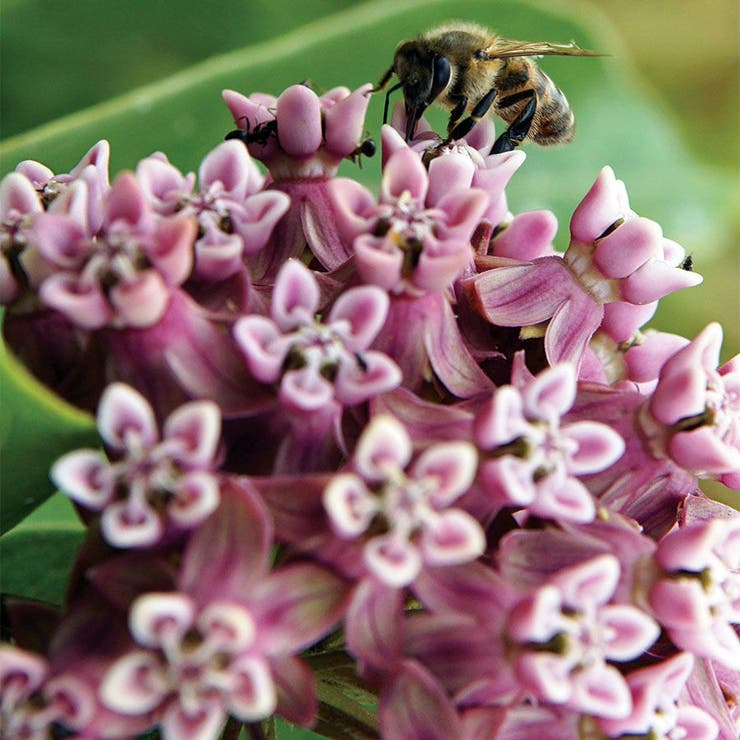
Dharaseeds
Asclepias Syriaca Heirloom Seeds
Estimated delivery between April 14 and April 17.
Common Milkweed (Asclepias Syriaca) is a native perennial plant that plays a crucial role in supporting pollinators, especially Monarch butterflies. Known for its large clusters of fragrant pink or purple flowers, it attracts a variety of pollinators, including bees, butterflies, and hummingbirds. These Heirloom Seeds are specially preserved for their original genetic traits, ensuring strong, healthy plants that thrive in a variety of garden settings.
Key Benefits
- Supports Monarch Butterflies: Common Milkweed is the primary host plant for Monarch butterfly larvae, providing a safe environment for caterpillars to thrive.
- Pollinator-Friendly: Besides Monarchs, it attracts bees, moths, and other beneficial insects, contributing to biodiversity in your garden.
- Hardy and Low Maintenance: Once established, Common Milkweed is drought-tolerant and requires minimal care, making it ideal for low-maintenance gardens.
- Beautiful Blooms: Clusters of fragrant, star-shaped pink or purple flowers bloom from late spring to summer, adding a vibrant and aromatic touch to any garden.
- Native and Eco-Friendly: As a native plant, it supports local ecosystems and promotes sustainability by using less water and fewer resources compared to non-native species.
Variety Features
- Flower Color: Typically pink to purple flowers with a unique star-shaped appearance.
- Height: Grows between 3 to 5 feet tall, making it a great background plant for flower beds and wildflower gardens.
- Bloom Time: Flowers bloom from mid to late summer and are a source of nectar for pollinators.
- Seed Pods: After blooming, the plant produces large, round seed pods filled with fluffy seeds, which can be harvested and used for propagation or crafting.
Planting Instructions
Best Planting Season
- Spring: Sow seeds in early spring after the last frost. You can start seeds indoors 6-8 weeks before the last frost, or sow them directly outdoors after the danger of frost has passed.
Ideal Location
- Light Requirements: Full sun to partial shade is ideal, though Common Milkweed thrives best with at least 6 hours of sunlight per day.
- Soil Requirements: Prefers well-drained, slightly sandy or loamy soil. It tolerates poor soil conditions but requires good drainage.
Planting Details
- Seed Preparation: Common Milkweed seeds have a hard coating. To improve germination, you can cold stratify them by placing them in a moist paper towel and refrigerating them for 30-60 days before planting.
- Seed Depth: Plant seeds about 1/4 inch deep.
- Spacing: Space seeds or seedlings about 18-24 inches apart to allow room for the plants to grow and spread.
Watering:
- Water the seeds regularly to keep the soil moist but not waterlogged. Once established, the plant is drought-tolerant and requires less frequent watering.
Care Instructions
Watering
- Water the plant well during its first growing season to help it establish strong roots. After that, Common Milkweed can tolerate dry conditions and prefers to be watered less frequently.
Fertilizing
- Common Milkweed doesn't require heavy fertilization. Adding compost to the soil before planting can help boost growth. Avoid high-nitrogen fertilizers, which can harm pollinators and alter the plant’s natural growth.
Pruning
- Prune dead or damaged growth after blooming to keep the plant tidy. You can also remove spent flower clusters to encourage more blooms.
Harvesting
- Flowers: You can cut the flowers to enjoy their fragrance in vases. However, leave some blooms for the pollinators.
- Seed Pods: Once the pods have matured and dried, you can collect the seeds for future planting or to make crafts. Gently open the pods to reveal the seeds surrounded by silky fibers.
Storage
- Seed Storage: Store harvested seeds in a cool, dry place in an airtight container to maintain their viability for the next planting season.
- Flower Storage: Fresh flowers will last up to a week in water in a vase.
Culinary Uses
- Edible Uses: While not commonly consumed, various parts of the milkweed plant have been historically used in indigenous medicine, and young shoots and flowers are edible when prepared correctly. However, caution is advised, as other parts of the plant are toxic if consumed improperly.
Conclusion
Planting Common Milkweed Heirloom Seeds in your garden is a great way to support pollinator populations, particularly Monarch butterflies, while adding beauty to your landscape with their colorful and fragrant flowers. As a native plant, it requires little maintenance once established and provides a vital food source for various pollinators. Whether you're creating a wildlife garden or simply looking to add some beauty and biodiversity to your yard, Common Milkweed is a perfect choice.










